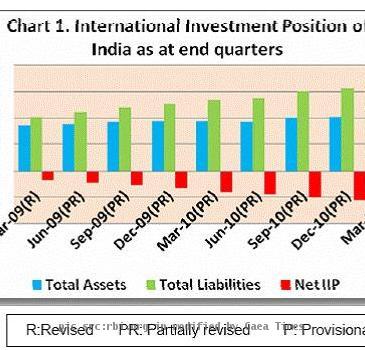Sources of Variation in Foreign Exchange Reserves in India during 2010-11
By RBIThursday, June 30, 2011
|
Earlier today, the Reserve Bank of India released the Balance of Payments (BoP) data for Q4 of 2010-11 (January-March 2011) on its website (www.rbi.org.in (www.rbi.org.in/) ). On the basis of these data along with the revised data for earlier quarters, the sources of variation in foreign exchange reserves during April-March 2010-11 have been compiled. Sources of Variation in Foreign Exchange Reserves: 2010-11 During 2010-11, there was an accretion to the foreign exchange reserves. The sources of variation in the foreign exchange reserves are set out in Table 1 (#T1) .
On a balance of payments basis (i.e., excluding valuation effects), the foreign exchange reserves increased by US$ 13.1 billion during 2010-11 as compared with an increase of US$ 13.4 billion during 2009-10. The foreign exchange reserves (including the valuation effects) increased by US$ 25.8 billion during 2010-11 as compared with an increase of US$ 27.1 billion during 2009-10 (Table 2 (#T2) ).
The valuation gains, reflecting the depreciation of the US dollar against major currencies, accounted for US$ 12.7 billion during 2010-11 as compared with valuation gains of US$ 13.6 billion during 2009-10. Accordingly, valuation gains accounted for 49.2 per cent of the total increase in foreign exchange reserves during 2010-11. Ajit Prasad Press Release : 2010-2011/1903 |
||||||||||||||||||||||||||||||||||||||||||||||||||||||||||||||||||||||||||||||||||||||||||||||||||||||||||||||||||||||||||||||||||||
